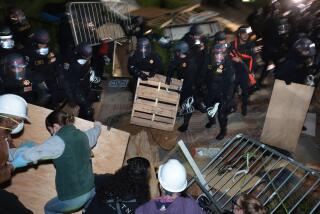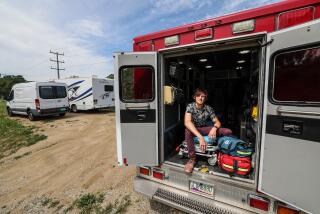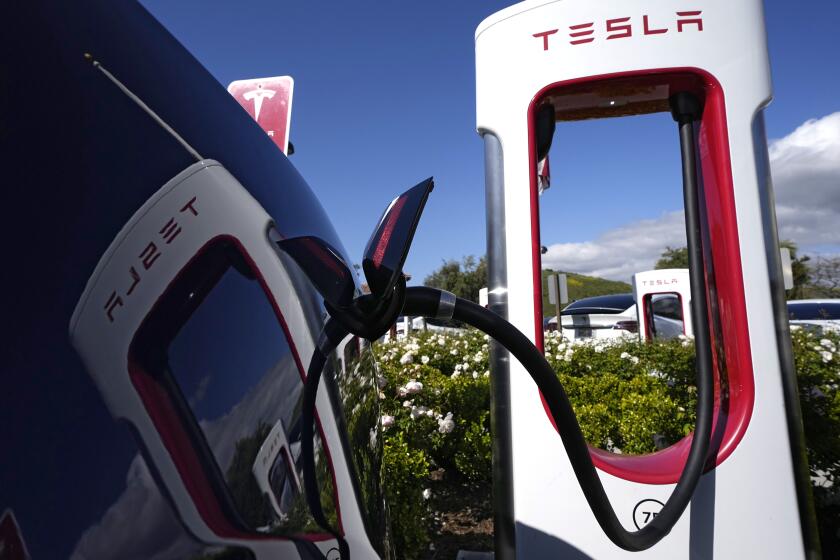Task force wants Jerry Brown to create climate change panel
A task force of California politicians, business people, academics and environmentalists is calling on incoming Gov. Jerry Brown to appoint a climate risk council within his office to focus statewide attention on adapting to the effects of global warming.
In a report to be released Monday, the 23-member California Adaptation Advisory Panel, a group convened by the Los Angeles-based Pacific Council on International Policy calls for stepped-up data-gathering, monitoring and coordination among state agencies and in the private sector to prepare for a steep sea level rise, diminishing water supplies and the spread of wildfire, as studies have predicted.
“Adaptation to climate change has been virtually ignored,” said panel Co-chairman William K. Reilly, a former administrator with the U.S. Environmental Protection Agency.
“A report like this reminds the agencies to pay attention and stiffens their spines. It implies planning: We’re not going to build a road in this place because the odds are it is going to get washed out.”
The 70-page document, largely financed with a grant from the oil company BP, steers clear of controversial proposals, such as mandating higher insurance rates for coastal building, strict water conservation for agriculture or a moratorium on development in fire-prone communities.
It draws largely on the state’s more comprehensive report, the Climate Adaptation Strategy, issued last December with input from more than a dozen agencies.
USC professor Dan Mazmanian, a co-director of the Pacific Council report, acknowledged that it does not propose “anything big or new,” but said the “impressive array of leaders with different views, coming together in a consensus,” would “elevate the issue across the state.”
The report was to be launched at a downtown breakfast Monday, with remarks by Ralph Cicerone, president of the National Academy of Sciences, California Secretary of Natural Resources Lester Snow, and former Southern California Edison chief executiveJohn Bryson, in addition to Reilly.
“What we recommend is fairly modest,” said Reilly, who is now a private equity investor. “But our objective was a unanimous report. If we had gotten into specifics, it would have been harder.”
The task force also included former California Assembly Speaker Bob Hertzberg, Winston Hickox, former secretary of the California Environmental Protection Agency, a former chief executive of the Metropolitan Water District of Southern California, and representatives from utilities, unions, environmental groups and academia.
Reilly said the climate risk council inside the governor’s office could be “a cross-cutting entity” modeled on the White House’s council on environmental quality, which coordinates efforts across federal agencies.
The report highlights projections of as much as 55 inches of sea-level rise along California’s coast by 2100, and suggests that developers should stop assuming a “static environment.” The sea-level rise could “overwhelm” levees in the Sacramento-San Joaquin River Delta, ports, roads, bridges and major airports, it notes.
California has only 12 tide gauge stations along its 1,100-mile coast, on average 90 miles apart, according to the report. A higher density network is needed to track local variations for a database accessible to builders and planners, it said.
“You don’t have to be a genius at reading code to understand it will be necessary to limit coastal development and move some activities back from the coast,” Reilly said. “We did not really say that because a group like this would have had difficulty getting consensus.”
The report highlights projections that the Sierra Nevada snowpack, critical to California’s water supply, could shrink by 60% to 80% by the end of the century, because more winter precipitation will fall as rain, and what snow there is will melt earlier, scientists say.
In the Sacramento delta, Reilly said, “1,100 miles of levees have to be shored up at a cost between $3 [million] and $10 million a mile.”
More to Read
Start your day right
Sign up for Essential California for news, features and recommendations from the L.A. Times and beyond in your inbox six days a week.
You may occasionally receive promotional content from the Los Angeles Times.







